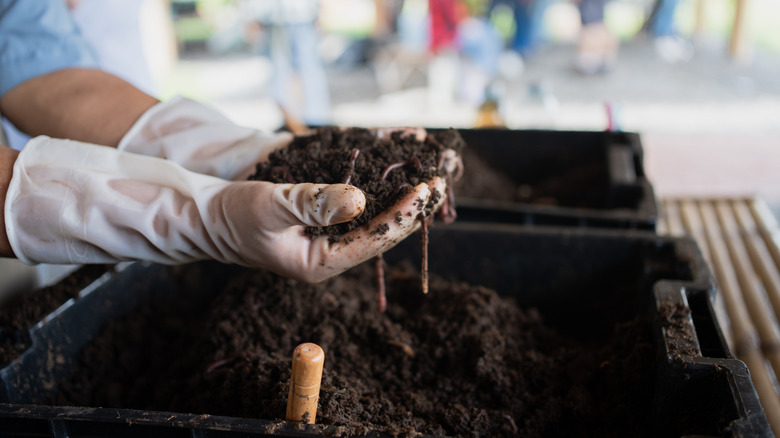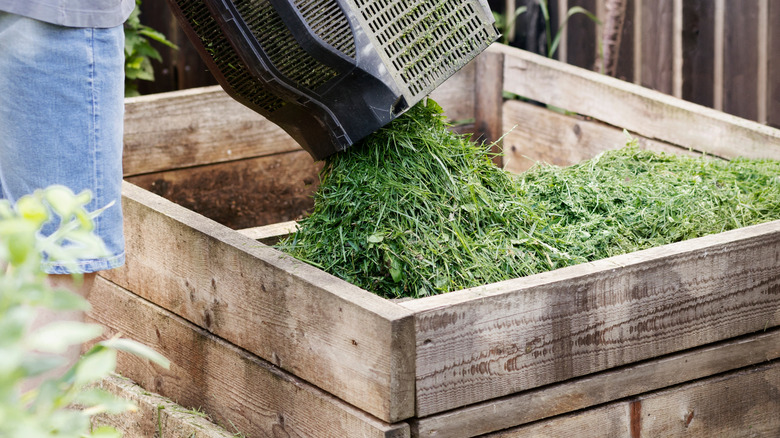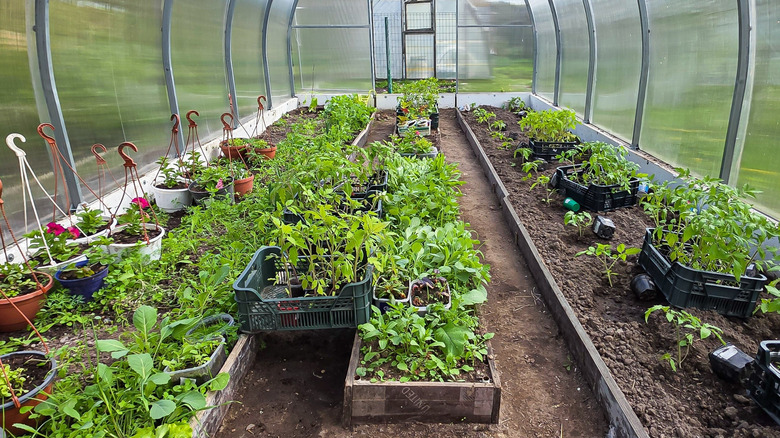Heat Your Greenhouse Using The Compost From Your Garden
Your compost pile is already a source of enriched soil and nutrients for your garden, but it can also be a source of free heat for your greenhouse as well. If you've ever turned your compost pile in the winter and seen plumes of steam rising from it, you know how much heat it can generate. You can use that naturally occurring heat from your own DIY compost to warm your greenhouse during the cold months.
Compost has been used as a heat source for centuries, dating back to ancient China. More recently, a French farmer named Jean Pain developed a method for using compost to heat his house and gardens. He even developed a methane digester that turned waste into biogas to run his car. We won't suggest replacing your high-octane gas with manure — regardless of how tempting that may be given today's prices — but even without the biodigester, you can take advantage of this method of producing heat for your greenhouse.
How compost heating works
Jean Pain started developing his method in the 1960s, when he built up a very large compost pile around a center tank of cow manure — the biodigester. He ran water lines throughout the compost pile, which were heated by the compost. Pain used this method to supply hot water to his home. He transferred the gas from the biodigester into a system of inner tubes and then compressed it into tanks. From there, he used it to power his generator, stove, and car. This method provided all of the power he needed for 18 months.
As you'd expect from its impressive results, the Jean Pain method is incredibly complex and requires you to have access to a considerable amount of land and manure. The primary raw materials for his garage-sized piles of compost were the brush from his land and horse manure. However, if you just want to use your compost to heat your greenhouse, you can simplify the process and perform it on a much smaller scale using your backyard compost pile. One of the biggest benefits of composting at home is the ability to generate free or inexpensive heat, depending on your supplies.
How to DIY a compost heating system
Once you understand the process, you can personalize it for your circumstances. The basics are fairly simple. Compost piles produce heat. You run water lines through the compost to heat up the water, then run the water into your greenhouse as a source of heat.
Start by measuring out the area where you plan to put the compost pile. You can enclose the pile with chicken wire or bales of hay for more structure. Use 1-inch diameter polyethylene tubing and layer it throughout the pile. (If you just started composting, here's what you should and should not add to your compost for best results). Lay down a layer of compost, saturate it with water, then coil the hose over the compost. Repeat this layering process until your compost pile is the desired height. The more tubing you use, the more hot water you'll generate. Plan for about 300 feet of tubing for a six-foot square compost pile.
In the greenhouse, you can harness the heat from the hot water by setting up a simple hot water tank. This can be a stock tank from your local garden supply store. Run one end of the tubing from your compost heater to empty into the stock tank. Set up a pump to transfer water from the tank back into your compost heating system. This circulating system provides a continuous supply of hot water to heat your greenhouse. If you want to take it further, you can set up a system to run tubing throughout your greenhouse to heat the soil directly.


